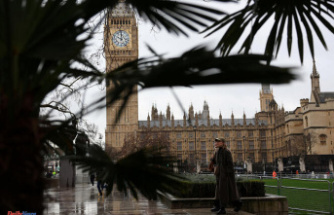The energy transition in Germany is progressing slowly. Reason enough for environmentally conscious people to consider what they can do themselves to get clean electricity. The solution is photovoltaic systems. Many people have already installed them on the roof of their houses, but those who live in an apartment did not have the option of generating their own electricity for a long time. A small balcony power plant could be worthwhile for all of them. With the right orientation and the sun, the solar panels generate up to 300 watts of power and feed the electricity directly into the home network. This allows long-running favorites such as the refrigerator and washing machine in a two-person household to be operated during the day.
Especially in view of rising energy prices and increased work from the home office, such a mini power plant can relieve the wallet somewhat. If the electricity is not needed at the moment, it can also be stored in a generator. In most cases, however, it is unprofitable to buy it, unless you also use it on the go, for example in a camper, or you are thinking of equipping your gazebo in the allotment garden with a solar module. But there are a few hurdles to consider before a balcony power plant can do its job.
In general, you need three things for a balcony power plant: Of course, the solar panels that generate the electricity, an inverter that converts the direct current into alternating current, and an outside socket into which the current is fed. However, whether tenants are allowed to attach a balcony power plant to the steel grid of the balcony at all, they must clarify with their landlord. In most cases this shouldn't be a problem. If, contrary to expectations, the landlord refuses permission, there is still the option of making a solar table out of a solar panel or buying a solar garden table. Your landlord can’t forbid you to have a table on the balcony and it stands around unused most of the time – why not draw electricity from it.
Then the location of the balcony needs to be considered. Logical: A south-facing balcony gets more sun than one facing north. However, modern photovoltaic systems now work so well that they produce electricity even with little light. However, it is of course true that the amortization of the balcony power plant is longer with less light. Ideally, you mount the solar power plant at a 30 degree angle on the balcony grille.
Speaking of assembly: building regulations must be observed here before you attach the balcony power plant. It is therefore advisable to rely on professionals who will install the photovoltaic system for you. In addition, the balcony power plant must not be visually disturbing. If you have a particularly large balcony, you can save yourself the installation on the grid and attach the solar panels to adjustable feet.
Connect the balcony power station to the outside socket and feed the electricity into your home. If there is no outside socket, your trusted electrician will have to lend a hand. And here, too, lurks a stumbling block. True, it is possible to use a regular outlet for this. However, the Association of Electrical Engineering recommends so-called Wieland plugs.
This is a plug-in connection that was developed specifically for feeding solar power into the home network and is intended to prevent improper use of the system. You cannot simply pull out a Wieland plug because the connection is screwed tight. Whether you follow the recommendation is your choice.
Danger! However, never connect the solar modules to a multiple socket. According to NDR, coupling multiple devices to one is dangerous.
The question remains as to which solar panels are the right ones. This mainly depends on the size of the balcony. The mini solar systems shown above with an output of around 200 watts (at the peak) usually measure around 1.5 by 1 meter and therefore also fit on smaller balconies. They cost between 180 and 300 euros and, under ideal conditions, generate around 300 kilowatt hours of electricity per year. At a price of 30 cents per kilowatt hour, this results in savings of 90 euros per year if every kilowatt hour is consumed. A solar module for 180 euros would have paid for itself after two years. However, the costs for inverters, brackets and assembly are missing. If you use the feet and the inverter, the costs for two panels are 615 euros, with savings of 180 euros, the system will pay for itself after 3.4 years. In addition, there may be additional costs for installation on the balcony railing and the outdoor socket. Attention: The installation on the outer grille should always be carried out by a specialist.
If you live at the top and have tasted blood, there are also wind turbines for the balcony. Here, too, building regulations must be observed. Unfortunately, this differs significantly from state to state. In Lower Saxony, for example, a building permit is required for a small wind turbine. Other states are more tolerant. And of course tenants have to ask their landlord for permission to install such a system, and you need another outdoor socket. But the wind howls at night and in winter when there is less sun.
There are still bureaucratic hurdles to overcome. For most tenants, this starts in the basement, at least if you are still using an old electricity meter. Because a balcony power plant may only be used if a digital electricity meter is doing its job. If an old one is installed, you will have to contact your network operator to get a replacement. Otherwise you have to register your mini power plants twice. Once at the market master data register and once at the distribution network operator. After that, power generation can begin.
And of course that works via the solar module. But because this produces direct current and alternating current flows in our sockets, it needs an inverter. And this inverter does nothing more than convert DC to AC. Use a cable to connect the inverter to the outside socket. Because electricity always seeks the shortest path of least resistance, the solar power feeds into the home network without any problems.
Sources: NDR.de
This article contains so-called affiliate links. There is more information here.












